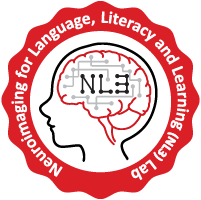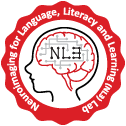What is MRI?
Magnetic resonance imaging (MRI) is a safe and painless scan that uses a magnetic field and radio waves to produce detailed pictures of the body’s organs and structures. An MRI scanner consists of a large doughnut-shaped magnet that often has a tunnel in the center. Participants are placed on a table that slides into the tunnel. During the scan, radio waves manipulate the magnetic position of the atoms of the body, which are picked up by a powerful antenna and sent to a computer. The computer performs millions of calculations, resulting in clear, cross-sectional black-and-white images of the body. These images can be converted into three-dimensional (3-D) pictures of the scanned area.
What is fMRI?
The fMRI records brain activity during MRI scan with a specific sequence. The fMRI basis is that when brain activity increases in a particular area of the brain due to cognitive tasks, the MR signal also increases in that area. The MR signal change is an indirect effect related to the changes in blood flow providing energy to the neurons.
What is fNIRS?
Functional Near-Infrared Spectroscopy (fNIRS), is the use of near-infrared spectroscopy (NIRS) for the purpose of functional neuroimaging. Using fNIRS, brain activity is measured through hemodynamic responses associated with neuron behavior. FNIRS is a non-invasive imaging method involving the quantification of chromophore concentration resolved from the measurement of near infrared (NIR) light attenuation or temporal or phasic changes.
What are the possible risks of getting involved in research projects at the NL3 Lab?
Behavioral tasks and questionnaires: All tasks and questionnaires entail only common, everyday activities (using a computer, filling out forms); these have no known risks.
fNIRS: There are no known risks associated with the use of low-level infrared light from LED sources to compute oxygen levels in the human brain as implemented in fNIRS.
MRI/fMRI
Eligibility and cautions: To evaluate risks of participation and determine eligibility for inclusion in a MRI/fMRI study, the CB3 MRI Safety Screening Form (for youth, for others) must be filled out and reviewed with the MRI technologist. This form must be filled out to the best of participant’s knowledge as these risks may be serious and potentially life threatening. The screening form covers devices, illnesses, injuries and medical procedures that affect participant safety. If completion of the screening form leads participant or the MRI technologist to have safety concerns, participant may be ineligible to participate in this study, or the MRI/fMRI portion of the study may need to be rescheduled at a later date to allow the MRI technologist to gather additional information about participant’s health status to inform the level of risk.
Some people cannot have a MRI scan because they have internal or external metal devices in or on their body that cannot be removed. For instance, if participant has a heart pacemaker, artificial heart valves, metal implants, chemotherapy or insulin pumps, or other such metal clips or rings, he/she will not be allowed to participate. An internal metal device could turn on or off inappropriately, or could move within him/her, potentially damaging tissue or vessels resulting in injury or death. Not removing piercings could cause tissue damage, warming or burns.
Tattoos could cause warming, redness or burns around the tattooed body part. Participant will be informed to not make skin contact to the sides of the tunnel when in the MRI machine. In other words, participant should stay as still as possible in the machine, and not touch any other part of the machine. If participant’s skin makes direct contact to the sides of the machine, it could potentially cause mild to severe burns. Certain medications could also enhance side effects such as dizziness, light-headedness, or nausea.
At this time, as a policy of the CB3 MRI Facility, women who are pregnant or trying to become pregnant are excluded from participation in research projects involving a MRI/fMRI scan. Although there are no known negative effects on pregnant women or fetuses, very little is known of the possibility of any negative effects. This study may involve risks that we cannot predict.
Likely risks when following all security measures: None.
Less likely risks: During the MRI scan, potential discomforts may include: feeling cold, feeling warm, anxiety, body discomfort/stiffness, or a metallic taste. Lying still for a prolonged time may prove uncomfortable. Some individuals may have a claustrophobic response, which is a fear of confined spaces, and some may experience stiffness from lying still. The MRI machine makes loud banging noises while taking measurements, so ear protection will be used to reduce the noise. Participant will be in communication with the MRI technologist throughout the MRI scan. If participant experience any of these or other discomforts, participant will be instructed to notify the MRI technologist immediately. Participant will be given a squeeze bulb to contact the MRI technologist, which may be used at any time before or during scanning.
Rare risks: An additional risk, though highly unlikely, is the possibility that metal objects could be pulled into the magnetic center of the MRI machine and hit participant. To reduce this risk, we require that all people involved with the study remove all metal from their clothing and all metal objects from their pockets. It is important to know that no metal can be brought into the MRI Room at any time. Once participant is in the MRI machine, the door to the MRI Room will be closed so that no one from the outside accidentally goes near the MRI machine.
Is there any cost involved for participants?
There is no cost to participant. Participants will get compensated for their time.
How will information about participant be protected?
Reasonable steps will be taken to protect the privacy and the confidentiality of participant’s study data. Upon the completion of the session, the collected data will be de-identified, wherever possible, and linked with a research identification (RID) code. Your collected data will be linked only to this RID code after the completion of the session and cannot be traced back to participant’s name or other identifiable information. Only the de-identified data will be stored electronically through a secure server indefinitely.
The only persons who will have access to your research records are the study personnel, the Institutional Review Board (IRB), and any other person, agency, or sponsor as required by law. The information from this study may be published in scientific journals or presented at scientific meetings but your identity will be never linked to any published data.
What are participants’ rights as research subjects?
Participant may ask any questions concerning this research and have those questions answered before agreeing to participate in or during the study.
For study related questions, please contact Dr. Wang at yingying.wang@unl.edu.
For questions concerning participant’s rights or complaints about the research contact the Institutional Review Board (IRB) at UNL:
- Phone: 1(402)472-6965
- Email: irb@unl.edu
Can you withdraw at any time?
Your participation in any of our research projects is completely voluntary. You can withdraw at any time before, during, or after the research begins for any reason. It will not affect participant’s relationship with the NL3 Lab or with the University of Nebraska-Lincoln.

